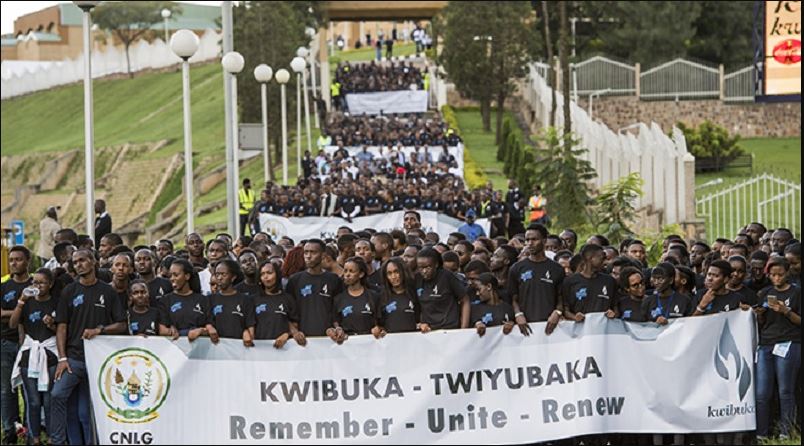
Walk to remember
The 1994 genocide against the Tutsi devastated Rwanda in countless tragic ways. More than a million Tutsi were murdered, in addition to survivors’ trauma and scars left from having lived in the shadow of death. The traumatic loss of loved ones left deep wounds on their minds and souls.
However, the genocide’s deepest cut was the literal extermination of entire families, with no survivors to bear witness – all part of the genocidaires’ plan for the total annihilation of the Tutsi. Genocide demarcates a clear “before” and “after” in the lives of survivors, but it completely annihilates any small chance of “after” for the wiped-off families.
The nuclear families – father, mother and children – that were killed in their entirety faced oblivion. There was no one to remember their existence unless it was taken up as a collective responsibility to carry their names. As a result, ensuring a “after” for wiped-out families becomes one of the primary responsibilities of those who live in the “after.” Remembering them is the only way to offer them also a “after”, there have been no shirking or lax excuses for this duty of memory.
On Saturday, June 4th, 2022, the umbrella of Graduates Genocide Survivors (GAERG), will organize a special commemoration of families completely wiped out, as part of the 28th commemoration of the 1994 Genocide against the Tutsi. During the vigil to be held at Kigali Genocide Memorial, the List of Names of wiped-out families will be recited in candlelight. The remembrance is a symbolic tombstone for them.
This annual commemorative ceremony – “Kwibuka imiryango yazimye” – perfectly embodies the collective duty to remember, which, when combined with education, aims to honour their memory while also exorcising genocide ideology in all its forms.
The ceremony which is held under the theme: “Ntukazime Nararokotse” – meaning “May you never be extinguished while we survived,” ensures that the wiped-off families are not only remembered, but also Rwanda’s national consciousness is summoned to build a better society.
GAERG has taken on the responsibility of preserving the memory of the wiped-out families, a task the organisation has undertaken to ensure that all of them are known and never forgotten.
Every name of wiped-out families is very important, and every new name of one of them added to the database is a victory against the genocide against the Tutsi. Every new name is a small victory against annihilation and oblivion.
This endeavor is a strenuous collection of biographical information from those with any knowledge of the wiped-out families, such as where they lived before the genocide, names of the members of the family, what happened to them and, if available, a photograph.
Since 2009, GAERG has been working to recover their names, and to date has managed to identify and build a database of some 15,593 families, composed of 68,871 people that were completely wiped out in 30 Districts.
GAERG wants members of each wiped-out family to be remembered as the persons they were before being killed and becoming victims. Further inquiry in this regard yields relatively important data with invaluable details, opening the door to the possibility of reconstructing each wiped-out family’s more or less complete composition and life history.
While not everything and everyone is discoverable, and some names were indeed lost, but even something as seemingly insignificant as discovering the nickname of a murdered baby from a wiped-out family — a detail otherwise completely lost to history — can be an incredible win. It is a simple act that rescues genocide victims from the obscurity of statistics, restores a tiny piece of their humanity, and prevents wiped-out families from disappearing without a trace.

Olivier Mushimire
Furthermore, wiped-out families died expecting that one of their members would survive. This is what parents hoped for before they were killed. GAERG has thus felt a keen responsibility to preserve the memory of the wiped-off families and, in part, restore what was taken: family, even if it isn’t biological.
While the genocide was an attempt to annihilate the lineage continuity of those that were defined as Tutsi, the inherent value of surviving it is the potential of familial lineage continuity. Faced with unbearable feelings of extreme loneliness and total emptiness, the need to start a new family became genocide survivors’ most compelling motivator.
This emotional state played a part in the structures of survivors’ associations, such as GAERG and AERG, that group members in a family setting, each with a father, a mother, and the rest are siblings. Survivorship instilled in survivors a sense of family continuity, resulting not only in a strong desire to create a family, but also to rebuild their country reborn as a large national family that honors the memory of the victims of the genocide.
It isn’t over for the wiped out families.
As Oscar Hammerstein said, “As long as there’s one person on Earth who remembers you, it isn’t over.” Remembering wiped-out families overcomes the helpless feeling of thinking that it is over for them.
Genocide is a crime against the concept of continuity. For wiped-off families, their biological line does not continue further, as there is no secession of life. Their biological lineage will never be anymore.
However, physical death is not the end of life when it marks the start of a new life, in the form of a collective consciousness or a spiritual legacy, that transcends the biological family lineage and connects with collective continuity. In this logic, death actually becomes a custodian of collective conscience, as their remembrance inspires Rwandans to transform their country into a collective extended family – through “Ndi Umunyarwanda” – that communes with the past in order to receive direction for the present and power to create a better future for all Rwandans.
Remembering them is every day and always. However, as time moves on, finding the remaining missing names from wiped-out families is getting harder. One of the biggest gaps and saddest things is especially with identifying little children whom people often just don’t remember by names, and understandably, the fewer the survivors left who knew them, the harder it is to know their names. But all in all, the remembrance theme, “Ntukazime Nararokotse,” reaffirms that the existence of wiped-out families has not been erased.
According to the ancient Egyptians, “you live as long as your name is spoken.” In the same spirit, remembering wiped-off families turns their tragic memory into a legacy that will always be part of our collective immortality as a nation.

